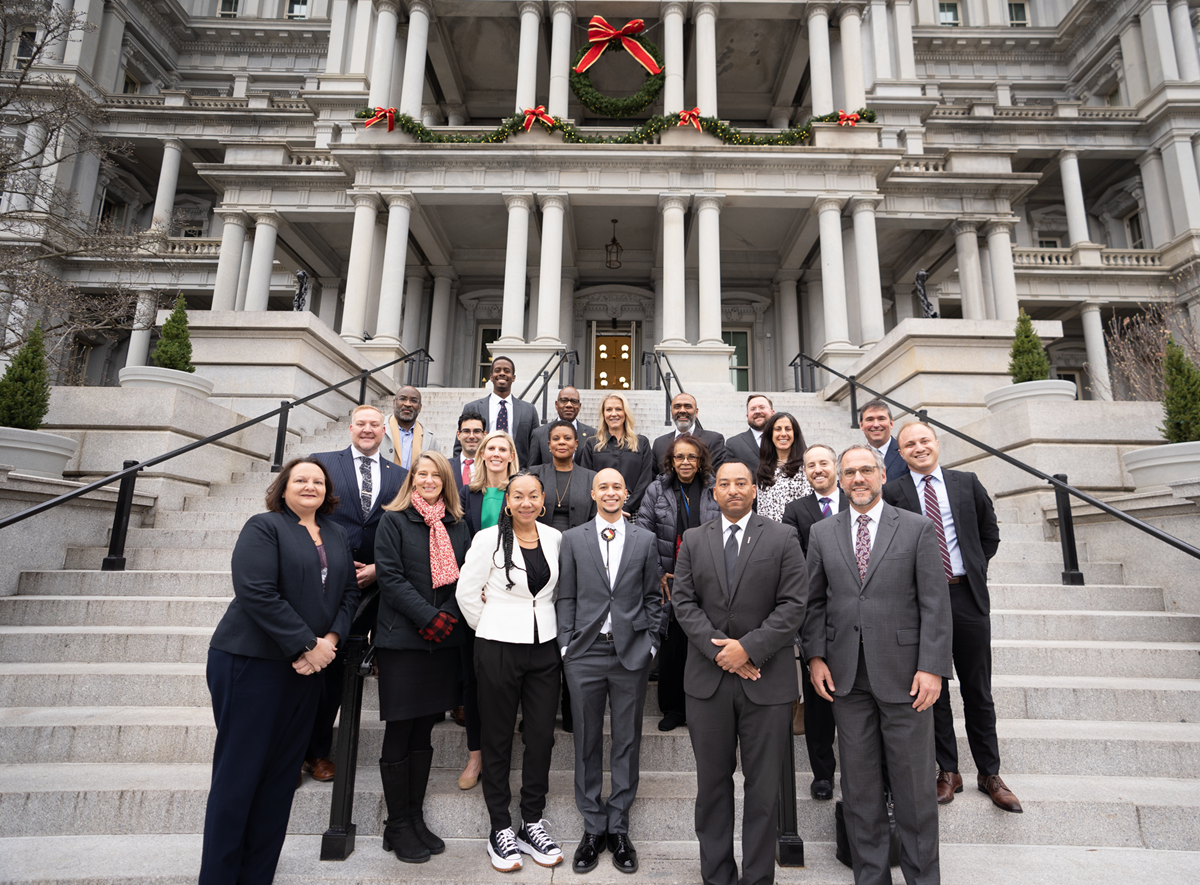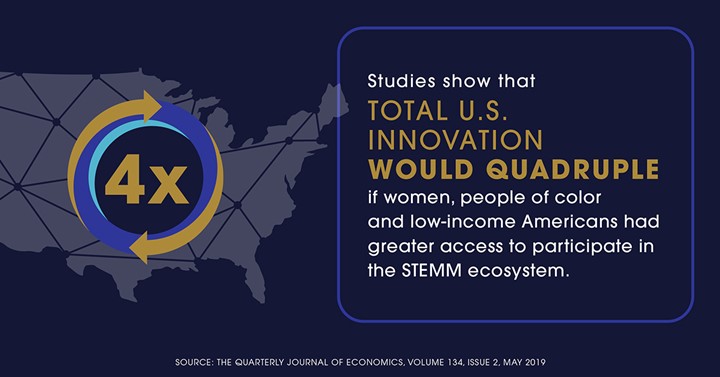
Alondra Nelson, Ph.D., deputy director for Science and Society, White House Office of Science and Technology Policy (OSTP); Sudip Parikh, Ph.D., chief executive officer of the American Association for the Advancement of Science (AAAS) and executive publisher of the Science family of journals; and Sam Gill, president and chief executive officer of the Doris Duke Foundation (DDF), are pictured with equity leaders across science, technology, engineering, mathematics and medicine fields during the White House Summit on STEMM Equity and Excellence on Monday, Dec. 12, 2022. OSTP, AAAS and DDF join more than 90 cross-sector partners to launch the STEMM Opportunity Alliance, a national initiative committed to closing the opportunity gaps in STEMM (science, technology, engineering, mathematics and medicine) fields in America.
“Have you ever been in the room for the start of something? For the start of something big? Something important?”
- Sudip S. Parikh, Ph.D., chief executive officer, American Association for the Advancement of Science
On December 12, the White House Office of Science and Technology Policy (OTSP) hosted the first-ever White House Summit on STEMM Equity and Excellence, a collaboration with the American Association for the Advancement of Science (AAAS) and the Doris Duke Foundation (DDF) to gather together leaders in government, philanthropy, industry, education, research and community in a historic multisector effort to eliminate systemic barriers and elevate equity in STEMM to a sustained, national priority. The event marked the launch of the STEMM Opportunity Alliance (SOA), a new landmark organization led by AAAS and launched with support from DDF to power a once-in-a-generation opportunity for a more just, inclusive and competitive ecosystem in the science, technology, engineering, mathematics and medicine fields.
With 90 existing partners across multiple sectors, the SOA accounts for more than $1.2 billion in combined work and investment in initiatives that will be coordinated to advance action for achieving shared national goals for equity in STEMM. Dr. Alondra Nelson, deputy assistant to the president and principal deputy director for Science and Society at OSTP, highlighted these priorities as including goals to:
- Ensure everyone has support and access to science and technology throughout their lifetimes.
- Address the STEMM teacher shortage.
- Close the funding gap by investing in people and communities who have historically been excluded from STEMM and STEMM resources.
- Prioritize scalable, replicable solutions that identify and eliminate bias, discrimination and harassment in STEMM classrooms, laboratories and workplaces.
- Promote accountability across the science and technology ecosystem.
“We can put a man on the moon, but we cannot hire women into our tech orgs at the rate we should – or people from underrepresented groups.”
- Baroness Oona King, vice president of diversity, equity & inclusion, Snap, Inc.

More than 20 speakers offered insights at the Summit, including, but not limited to, Arati Prabhakar, Ph.D., chief advisor to the president for Science and Technology and director, Office of Science and Technology Policy; Representative Eddie Bernice Johnson, chair, United States House Committee on Science, Space and Technology; Brian Deese, director of the National Economic Council; John Podesta, senior advisor to the president for Clean Energy Innovation; Alondra Nelson, Ph.D., deputy assistant to the president and principal deputy director for Science and Society, Office of Science and Technology Policy; and Zach Oxendine of Microsoft, who offered the closing remarks.
DDF President and CEO Sam Gill also moderated a panel featuring Sudip S. Parikh, Ph.D., chief executive officer, American Association for the Advancement of Science; April Arnzen, senior vice president and chief people officer, Micron Technology, Inc.; Baroness Oona King, vice president of diversity, equity & inclusion, Snap, Inc.; and David Wilson, president, Morgan State University.
“The Doris Duke Foundation is honored to answer the challenge of the Biden-Harris Administration, and we’re doing that today by announcing with the American Association for the Advancement of Science the STEMM Opportunity Alliance, which will really be the first whole of science effort dedicated to equity in the science, technology, engineering, mathematics and medicine fields.”
- Sam Gill, president and CEO, Doris Duke Foundation
About the Doris Duke Foundation’s Commitment to Equity in STEMM
At the Doris Duke Foundation, we view equity in STEMM as a key driver of our mission and indispensable to our aims for a more creative, equitable and sustainable future. DDF will provide key seed investment for the STEMM Opportunity Alliance to support its initial years of work. DDF’s commitments to the SOA also include a 2021 $4.4 million investment in the COVID-19 Fund to Retain Clinical Scientists, which is a $12 million co-funding initiative to reduce barriers that may hinder biomedical researchers with family caregiving responsibilities borne out of an existing DDF program launched in 2015. Additionally, next year, this investment will be followed by at least $15 million in investment as part of our work to reimagine biomedical research for equity.
The foundation has deep roots in advancing equity in STEMM. We also strive to develop a more diverse, equitable and inclusive biomedical research workforce through efforts such as our Clinical Research Continuum: High School to College program, which launched in 2011 to offer mentored clinical research experiences to students who might not have previously considered a STEMM career, and the Doris Duke Conservation Scholars Program, which aims to build a conservation workforce that better reflects the makeup of the U.S. through undergraduate environmental research programs that foster diversity and inclusion. The foundation has also provided support to environmental conservation organizations to help them develop more diverse, inclusive and equitable workplaces, as well as Black, Indigenous and people of color-led organizations specializing in community-centered conservation efforts to foster environmental stewardship and build connections between people and the world around them. Additionally, we recently shifted the grantmaking strategy of our Environment Program, increasing support of Indigenous-led conservation and making it a pillar of our work.
Last but not least, the foundation’s center for environmental stewardship, Duke Farms, is dedicated to connecting people to publicly accessible open space where barriers are removed, and people are encouraged to engage with nature. The Duke Farms internship program also aims to diversify the community of emerging professionals interested in pursuing careers in conservation, natural resources, parks management, environmental education and other related fields. Duke Farms also runs the Raritan River Watershed School Program, which provides K-12 students with multidisciplinary lessons that increase STEMM knowledge while building environmental literacy and providing transformational learning experiences.